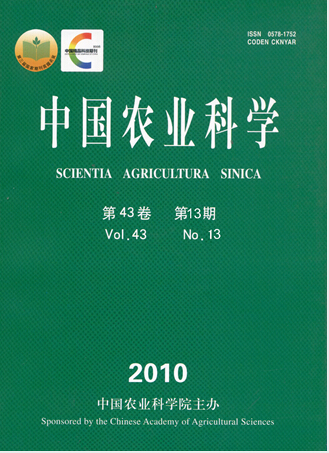【Objective】 Genetic polymorphisms of FAS gene in sheep were detected in order to provide a theoretical foundation for further studying on the genetic differentiation among sheep breeds, association analysis on sheep meat quality traits and polymorphism, location and expression regulation of sheep FAS gene, and so on. 【Method]】 PCR-SSCP and DNA sequencing approaches were applied to assess the single nucleotide polymorphisms (SNPs) and analyze the genetic polymorphisms at 3′-UTR of FAS (Fatty acid synthase) gene of five Chinese sheep breeds including Lanzhou fat-tailed sheep (LT, 38),Tan sheep (Tan, 58), Oula sheep (OL, 30), Ganjia sheep (GJ, 40) and Qiaoke sheep (QK, 39) in this study. 【Result】 2 SNPs (951SNPs and 1 005SNPs) were observed in 3’-UTR of sheep FAS gene, and 3 genotypes (AA, Aa, aa and EE, Ee, ee) were detected, respectively. AA, Aa and EE, Ee were observed in all the 5 Chinese sheep breeds, but aa and ee genotypes were not detected in any breed. AA and EE were the genotype with the highest frequency in all of the sheep breed. The predominant alleles were alleles A and E, whose frequency was higher than a and e in all the 5 breeds. Compatibility test indicated that Lanzhou fat-tailed sheep, Tan sheep, Oula sheep, Ganjia sheep and Qiaoke sheep were all in the Hardy-Weinberg equilibrium at 2 SNPs. Independence test indicated that: at 951 SNPs site the genotype distribution was obviously different between Lanzhou fat-tailed sheep and other all sheep breeds (Tan sheep, Oula sheep, Ganjia sheep and Qiaoke sheep) (0.01<P<0.05), and it was extremely obviously different between Tan sheep and other sheep breeds (Oula sheep, Ganjia sheep and Qiaoke sheep)(P<0.01),while it was not obvious between Oula sheep and other two sheep breeds (Ganjia sheep and Qiaoke sheep)(P>0.05). At 1 005 SNPs site it was not obvious between all of the 5 sheep breed (P>0.05). Sequencing analysis showed that 2 mutations (GSA) occurred at the 951 site (C→T) and 1 005 site (A→G) of 3′-UTR of transcription product of FAS gene. Secondary structure prediction of the different genotypes of mRNA in FAS gene indicated that 951SNPs could lead to significant changes in secondary structure, while the 1 005 SNPs did not change its secondary structure. 【Conclusion】 2 SNPs were observed in 3′-UTR of sheep FAS gene, which resulted from 2 single base mutation. At 2 SNPs site, Lanzhou fat-tailed sheep, Tan sheep, Oula sheep, Ganjia sheep and Qiaoke sheep were all in the Hardy-Weinberg equilibrium, but at 951 SNPs site the genotype distribution was obviously different between Lanzhou fat-tailed sheep and other all sheep breeds (Tan sheep, Oula sheep, Ganjia sheep and Qiaoke sheep), and it was extremely obviously different between Tan sheep and other sheep breeds (Oula sheep, Ganjia sheep and Qiaoke sheep),while it was not obvious between Oula sheep and other two sheep breeds (Ganjia sheep and Qiaoke sheep). At 1 005 SNPs site it was not obvious among all of the 5 Chinese sheep breeds.









